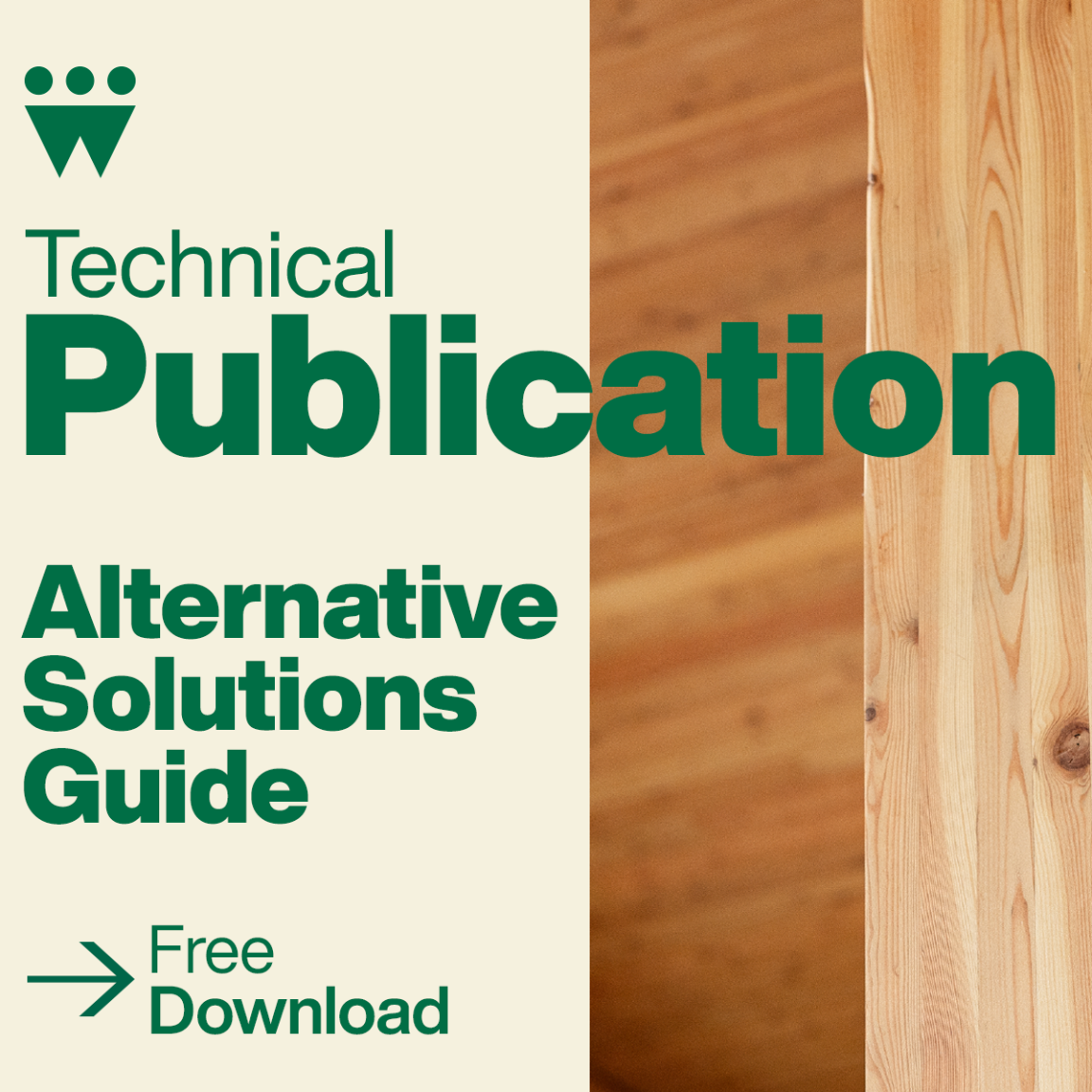
Derek Ratzlaff
P.Eng., PE, Struct.Eng., Technical Director, WoodWorks BC/Canadian Wood Council
Kevin To
M.Eng., P.Eng., ing, CP, Associate, GHL Consultants Ltd.
Henning White
P.L.Eng., CFPS, Principal, Ratio Code Consultants Ltd.
Jeff Mitchell
M.Eng., P.Eng., CP, Principal, GHL Consultants Ltd.
Derek Newby
AIBC, Managing Principal, Perkins + Will, Vancouver and Calgary
Slavica Puzovic
RELi, LEED AP BD+C, Senior Designer, Perkins + Will
WoodWorks BC thanks the following authors for their contribution to the Alternative Solutions Guide, an important technical resource for AEC+D professionals in B.C. and beyond looking for support to expand their use of mass timber construction.
Photo credit: Canadian Wood Council
Joe Krevs
P.L.Eng., RBO, Principal, Ratio Code Consultants Ltd.
Conclusion
Pursuing an alternative solution to enable timber construction demands greater planning and collaboration. As the building code evolves, so, too, will buildings and the materials and methods builders use to make them. The imperative to reduce greenhouse gas emissions from buildings means mass timber construction is likely to become more widespread.
Alternative solutions are one tool for enabling the design and construction industry, and the projects constructed, to evolve and progress to meet the needs of society. Like all tools, these solutions should be used carefully and in the right circumstances to ensure applicants and reviewers are able to provide a built environment that will continue to provide safe and resilient shelter for a constantly changing world.
The alternative solutions of today can lay the foundation for the acceptable solutions of tomorrow. The time and effort invested to innovate within the confines of the regulatory system provide invaluable progress in developing future prescriptive code content and ensuring the building codes reflect continuing innovations in the built environment.
Allow time for discussion.
Ample time should be provided to allow for discussion and revisions of the alternative solutions. This is usually done by email, but for some complex projects, in-person or virtual meetings may be the fastest approach to communicate ideas and share opinions.

Be knowledgeable.
Alternative solutions should be prepared by a registered professional, whether an architect or an engineer. The application documents should bear the professional seal of the registered professional. Evidence of specific knowledge of the topic matter of the alternative solution should be demonstrated by the applicant.

Be thorough.
Sufficient documentation for any alternative solution application should be provided. The submission should be “complete” and stand on its own, to facilitate review without further resources other than the BP application drawings provided in support.

Be clear.
When proposing an alternative solution, it’s essential to present all the relevant information in a clear and logical format.

Research thoroughly.
Most jurisdictions require rezoning and a development permit (DP) for new buildings or major alterations to existing buildings. The review of alternative solutions, in most jurisdictions, lies with the Building Division during the building permit (BP) review stage. However, the jurisdiction may not allow the BP review to be done concurrently with the DP or rezoning, so it’s important to determine the permitting strategy with the jurisdiction during the design development stage.


Engage early.
Pursuing alternative solutions requires detailed collaboration with the AHJ. Proposals are successful when design teams engage with the AHJ early, are forthcoming with communication, and bring well-organized and defensible solutions for consideration.
Commentary offered in the Guide is far-reaching and includes the following:
WoodWorks BC’s Alternative Solutions Guide was created to provide direction for designers to better understand how to enable innovative ideas that may not neatly fit the acceptable solutions described in the building code. It provides general direction on what should be included in an application when proposing an alternative solution, who should be included to provide relevant input, and which important requirements should be considered and documented.
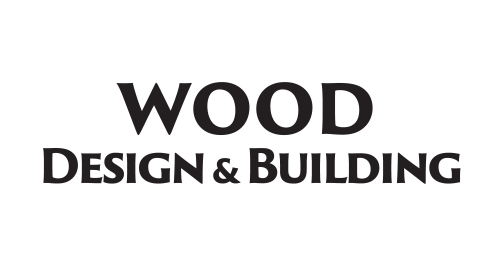
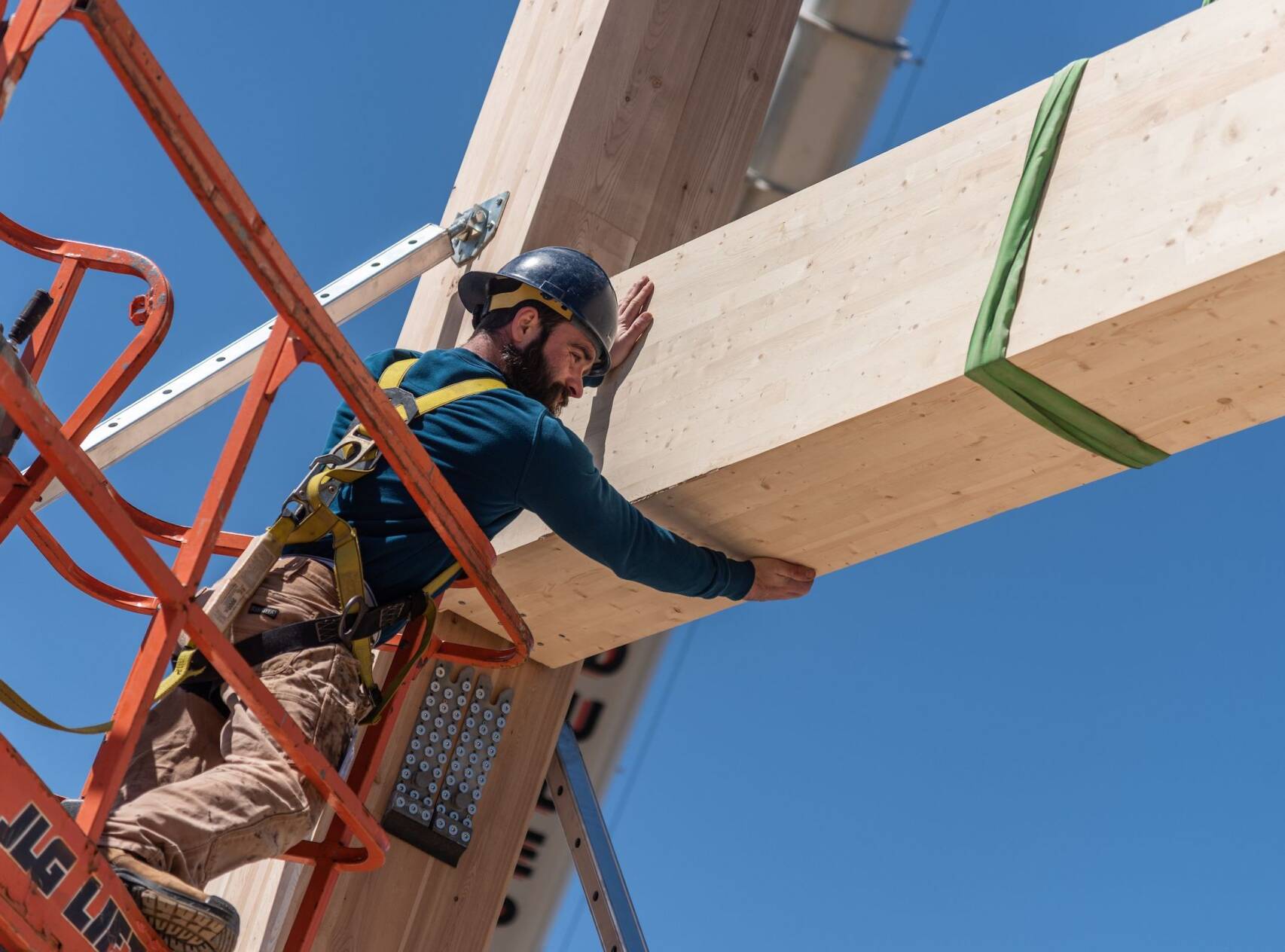
Unlike acceptable solutions, which are intended to be predictably accepted, alternative solutions require judgment by both the professional proposing them and the authority having jurisdiction (AHJ) that exercises discretion to approve their use. As such, alternative solutions typically involve direct consultation and collaboration between professionals to arrive at a supported and permitted solution.
Alternative solutions are project-specific, and often, similar projects (in terms of scope, size, program, and construction) must still start from the beginning, spending enormous amounts of time to demonstrate if an innovative idea can even be applied. They may be either familiar or tailored to a specific set of conditions; often, alternative solutions are “adjacent” to an acceptable solution but require some flexibility to satisfy the intent.
In addition, alternative solutions often require input from various parties—including designers, engineers, and code consultants, as well as contractors and manufacturers—that can offer a better understanding of possibilities and performance criteria. If important input is left out when writing an alternative solution, it’s possible that addressing a problem in one segment of design might result in increased cost and complexity in other segments.
Alternative solutions offer a path to code compliance in acknowledgement that the acceptable solutions described in the code may be unable to predict the diversity of designs in practice, and to allow innovation in construction. The key principle behind the alternative solution compliance path is that the alternative solution proposed must at least meet (or exceed) the performance level provided by the acceptable solution it’s intended to replace.
At the same time, tools for performance testing and simulation are becoming more widespread. In light of the diverse and evolving building industry, alternative solutions that enable new ways of building are likely to become more commonplace.
A critical area where alternative solutions may be employed is in the use of mass timber construction. The introduction of mass timber construction techniques—enabled by a range of engineered wood products, associated connection technologies, and fabrication methods—has resulted in a wide range of possible building solutions that may not have been considered by building codes.
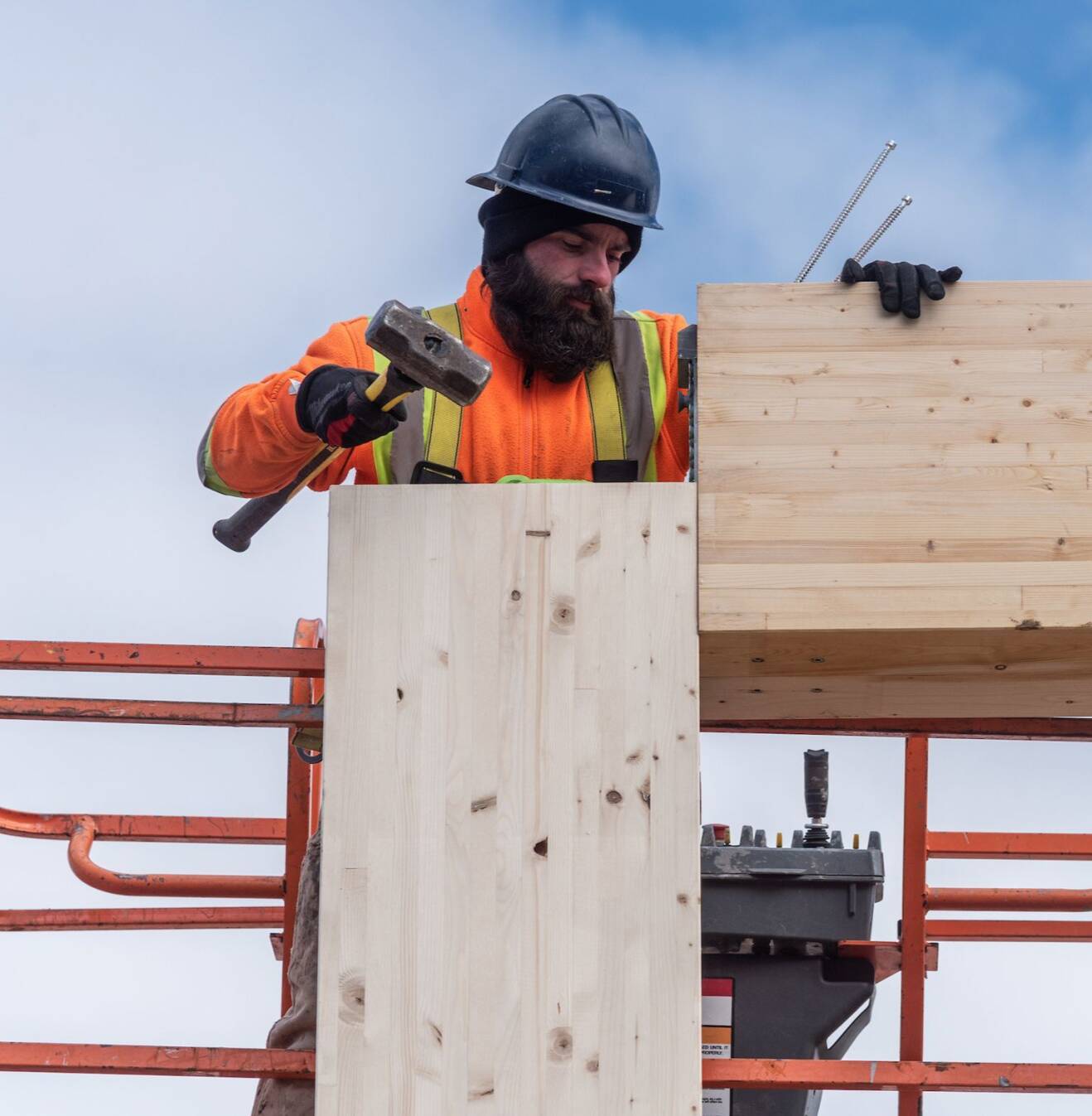
While alternative solutions have been an important feature of the National Building Code of Canada since 2005, there remains a lack of understanding among building professionals on how to approach their use. As the construction industry evolves, with increasing innovation in design and construction capabilities, new ways of building that may not be well addressed by building codes will emerge.
Summary by Mitchell Brown
WoodWorks BC’s Alternative Solutions Guide provides builders with resolutions for mass timber construction
Light

Allow time for discussion.
Ample time should be provided to allow for discussion and revisions of the alternative solutions. This is usually done by email, but for some complex projects, in-person or virtual meetings may be the fastest approach to communicate ideas and share opinions.
Be knowledgeable.
Alternative solutions should be prepared by a registered professional, whether an architect or an engineer. The application documents should bear the professional seal of the registered professional. Evidence of specific knowledge of the topic matter of the alternative solution should be demonstrated by the applicant.
Be thorough.
Sufficient documentation for any alternative solution application should be provided. The submission should be “complete” and stand on its own, to facilitate review without further resources other than the BP application drawings provided in support.
Be clear.
When proposing an alternative solution, it’s essential to present all the relevant information in a clear and logical format.
Research thoroughly.
Most jurisdictions require rezoning and a development permit (DP) for new buildings or major alterations to existing buildings. The review of alternative solutions, in most jurisdictions, lies with the Building Division during the building permit (BP) review stage. However, the jurisdiction may not allow the BP review to be done concurrently with the DP or rezoning, so it’s important to determine the permitting strategy with the jurisdiction during the design development stage.
Engage early.
Pursuing alternative solutions requires detailed collaboration with the AHJ. Proposals are successful when design teams engage with the AHJ early, are forthcoming with communication, and bring well-organized and defensible solutions for consideration.
Commentary offered in the Guide is far-reaching and includes the following:
WoodWorks BC’s Alternative Solutions Guide was created to provide direction for designers to better understand how to enable innovative ideas that may not neatly fit the acceptable solutions described in the building code. It provides general direction on what should be included in an application when proposing an alternative solution, who should be included to provide relevant input, and which important requirements should be considered and documented.
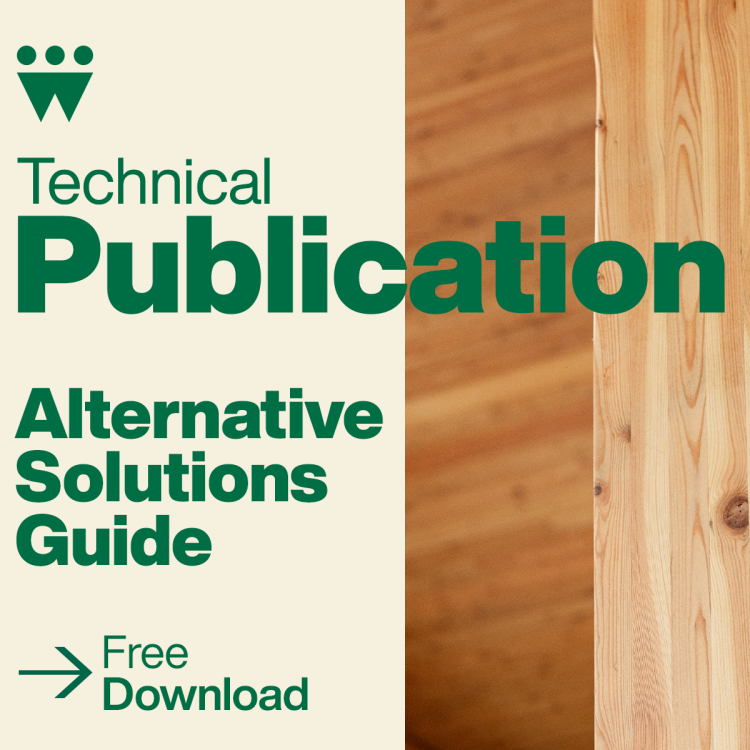
Derek Ratzlaff
P.Eng., PE, Struct.Eng., Technical Director, WoodWorks BC/Canadian Wood Council
Kevin To
M.Eng., P.Eng., ing, CP, Associate, GHL Consultants Ltd.
Henning White
P.L.Eng., CFPS, Principal, Ratio Code Consultants Ltd.
Jeff Mitchell
M.Eng., P.Eng., CP, Principal, GHL Consultants Ltd.
Derek Newby
AIBC, Managing Principal, Perkins + Will, Vancouver and Calgary
Slavica Puzovic
RELi, LEED AP BD+C, Senior Designer, Perkins + Will
WoodWorks BC thanks the following authors for their contribution to the Alternative Solutions Guide, an important technical resource for AEC+D professionals in B.C. and beyond looking for support to expand their use of mass timber construction.
Photo credit: Canadian Wood Council
Joe Krevs
P.L.Eng., RBO, Principal, Ratio Code Consultants Ltd.
Conclusion
Pursuing an alternative solution to enable timber construction demands greater planning and collaboration. As the building code evolves, so, too, will buildings and the materials and methods builders use to make them. The imperative to reduce greenhouse gas emissions from buildings means mass timber construction is likely to become more widespread.
Alternative solutions are one tool for enabling the design and construction industry, and the projects constructed, to evolve and progress to meet the needs of society. Like all tools, these solutions should be used carefully and in the right circumstances to ensure applicants and reviewers are able to provide a built environment that will continue to provide safe and resilient shelter for a constantly changing world.
The alternative solutions of today can lay the foundation for the acceptable solutions of tomorrow. The time and effort invested to innovate within the confines of the regulatory system provide invaluable progress in developing future prescriptive code content and ensuring the building codes reflect continuing innovations in the built environment.
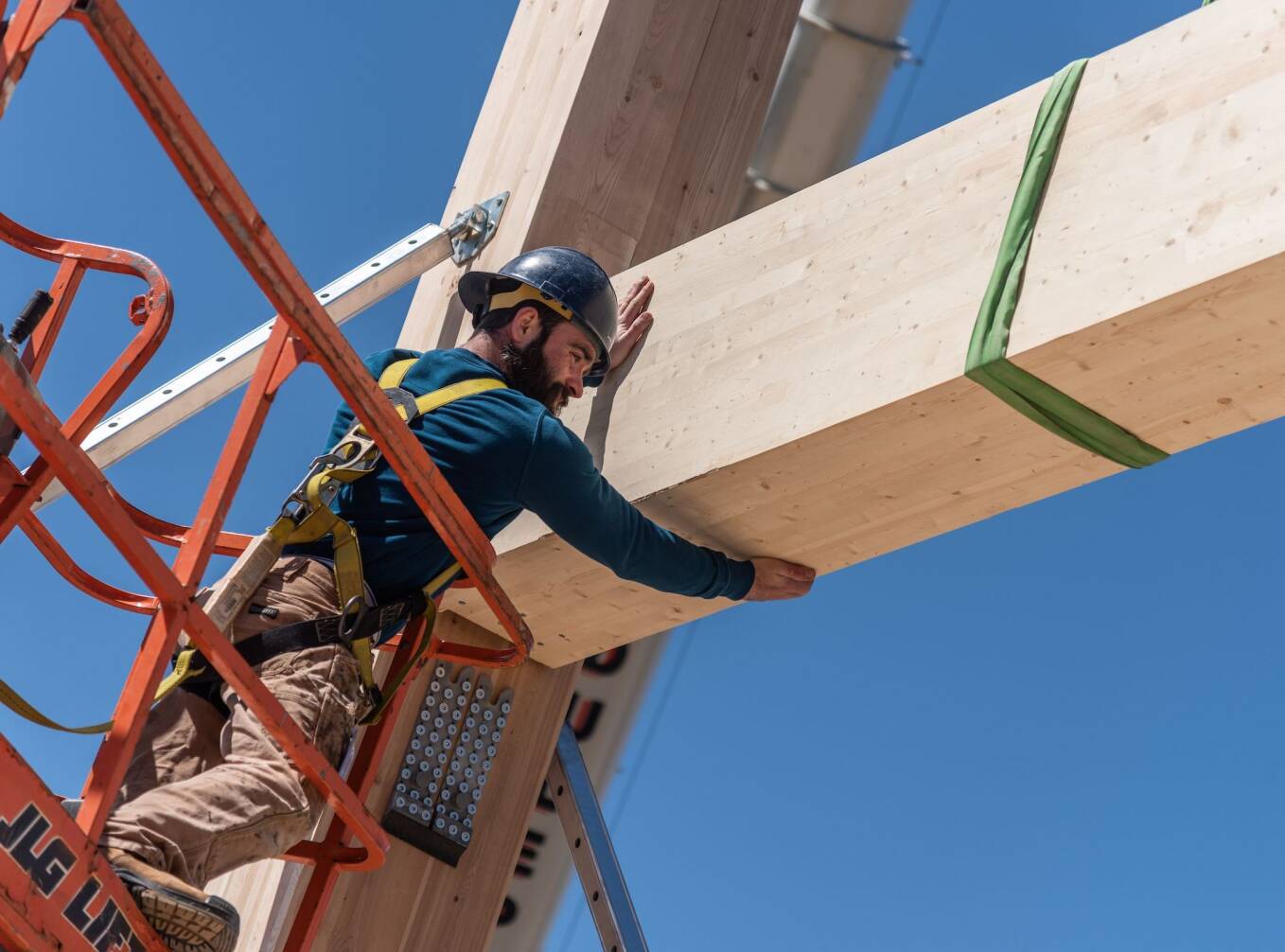
Unlike acceptable solutions, which are intended to be predictably accepted, alternative solutions require judgment by both the professional proposing them and the authority having jurisdiction (AHJ) that exercises discretion to approve their use. As such, alternative solutions typically involve direct consultation and collaboration between professionals to arrive at a supported and permitted solution.
Alternative solutions are project-specific, and often, similar projects (in terms of scope, size, program, and construction) must still start from the beginning, spending enormous amounts of time to demonstrate if an innovative idea can even be applied. They may be either familiar or tailored to a specific set of conditions; often, alternative solutions are “adjacent” to an acceptable solution but require some flexibility to satisfy the intent.
In addition, alternative solutions often require input from various parties—including designers, engineers, and code consultants, as well as contractors and manufacturers—that can offer a better understanding of possibilities and performance criteria. If important input is left out when writing an alternative solution, it’s possible that addressing a problem in one segment of design might result in increased cost and complexity in other segments.
Alternative solutions offer a path to code compliance in acknowledgement that the acceptable solutions described in the code may be unable to predict the diversity of designs in practice, and to allow innovation in construction. The key principle behind the alternative solution compliance path is that the alternative solution proposed must at least meet (or exceed) the performance level provided by the acceptable solution it’s intended to replace.
At the same time, tools for performance testing and simulation are becoming more widespread. In light of the diverse and evolving building industry, alternative solutions that enable new ways of building are likely to become more commonplace.
A critical area where alternative solutions may be employed is in the use of mass timber construction. The introduction of mass timber construction techniques—enabled by a range of engineered wood products, associated connection technologies, and fabrication methods—has resulted in a wide range of possible building solutions that may not have been considered by building codes.

While alternative solutions have been an important feature of the National Building Code of Canada since 2005, there remains a lack of understanding among building professionals on how to approach their use. As the construction industry evolves, with increasing innovation in design and construction capabilities, new ways of building that may not be well addressed by building codes will emerge.

Summary by Mitchell Brown
WoodWorks BC’s Alternative Solutions Guide provides builders with resolutions for mass timber construction
Light
